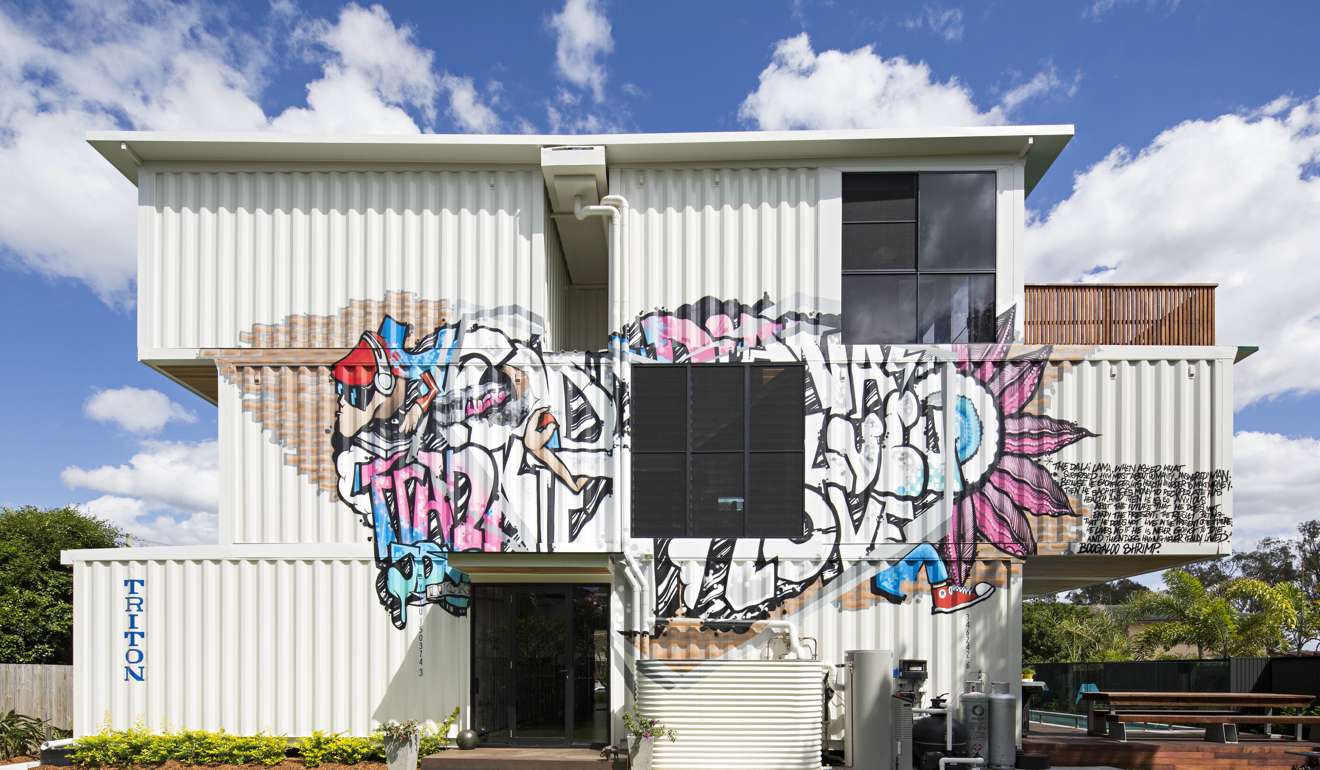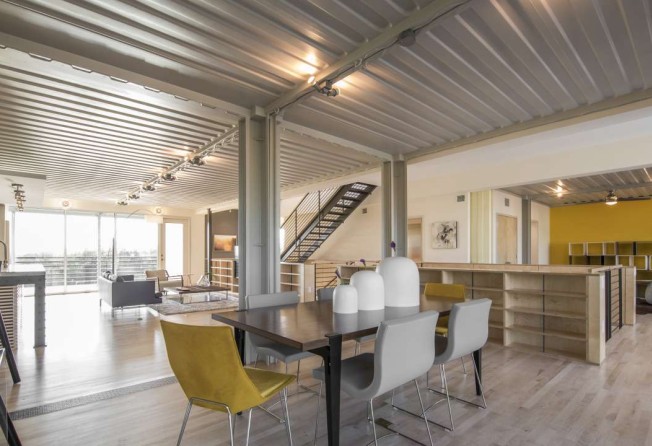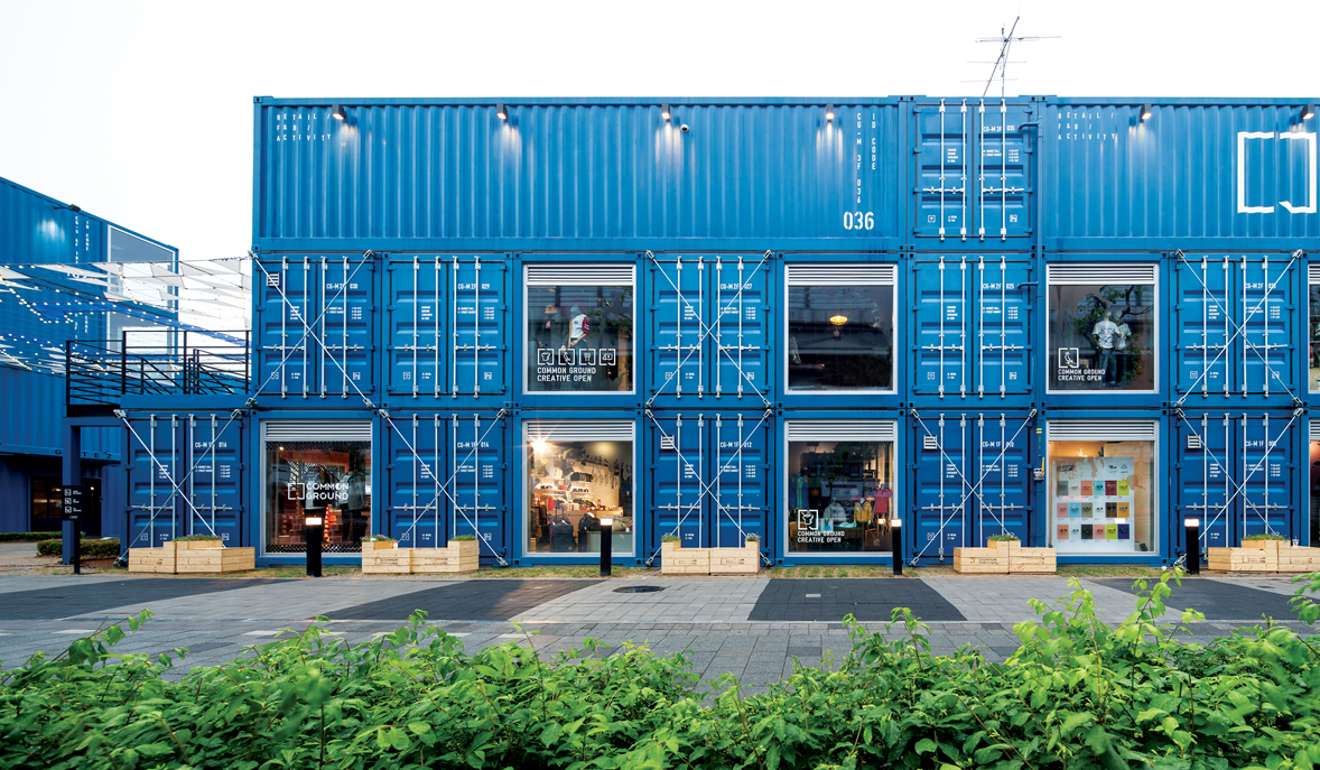
After circling the globe for years, shipping containers finding a new meaning to life
Container homes have cost as little as US$20,000 – a one-room cabin built by a Canadian engineer in 2012

In a city that boasts more skyscrapers than anywhere else in the world – and nearly three quarters of them used for housing, according to the Council on Tall Buildings and Urban Habitat data base – it’s hard to imagine anyone in Hong Kong choosing to live in a shipping container.
South Korean architect Younjin Jeong asks, why not? The co-founder and creative director of Seoul-based studio Urbantainer, has built a whole shopping mall out of 200 shipping containers (called Common Ground, an experimental project in Seoul’s Gwangjin District), and sees the concept as an urban housing solution for millennials in a city such as ours.

Its pre-fabrication construction method reduces build time by 50 per cent, and cost by 15 per cent, Jeong says. Given that millennials cannot hope to afford conventional housing in dense cities today, mass-produced containers – or mobile architecture, as Jeong calls it, has advantages “not only for mega cities but also for developing countries in the future”.
Container architecture is a sub-culture gaining ground in overseas locations – from Denmark to Canada to Australia – but rarely seen in the urban setting.
The arguments for, usually lead with cost and environmental factors. Owner-builders say that their container home have cost them as little as US$20,000 (a one-room cabin built by a Canadian engineer in 2012) or US$40,000 (a 1,000 square foot home for a Costa Rica family).
Environmentally, there’s a case for small (the tiny house movement). Containers are already in existence, so they can be upcycled. And they’re long lasting, so potentially could be re-used or melted down later.
That’s clearly not everyone’s motivation: how else do you explain lavish examples like Graceville in Brisbane Australia, built from 31 recycled containers by owners Todd and Diana Miller, whose project was featured in the local version of TV architecture show Grand Designs (and later sold for AUD$1,400,000); and eco-luxe The Beach Box in the Hamptons, one of the wealthiest areas of New York, later marketed with a US$1 million-plus price tag.
The Millers had practicality in mind – they lived in an area of Queensland prone to flooding, and wanted their home to be bullet-proof. The 6,000 square feet, three-level residence was designed by and built by Todd Miller and features four bedrooms plus study, two living areas, art studio, gym and double garage.

For Matt Mooney, an American architect, building a 3,700 sq ft container home in Dallas fulfilled a lifelong dream inspired by reading sci-fi adventure novels as a kid. “They are, after all, some of the biggest Lego blocks one can build with,” says Mooney, a managing principal at Dallas-based Corgan, an international practice with offices in Hong Kong and China.
Shipping containers “are really very cleverly engineered, versatile and beautiful pieces of equipment,” he adds. “They are foundational to the commerce of the world, (and) have a utility that is most appealing.”
It is made from 14 one-trip containers (seven 40 ft high and seven 20 ft high) originated in Shanghai, and sourced for the client by Hong Kong company Dolphin Container HK Ltd. After their journey across the Pacific, the containers were emptied, delivered to a local depot, then trucked to the Mooneys’ site for construction.
Lead designer of the PV14 house, as the project is known, was Michael Gooden, of M Gooden Design, a boutique architecture and design studio. He currently has two other container houses under construction in Santa Fe, New Mexico and in Central Texas.
Gooden says his customers like the idea of sustainability and some just want to try something different, so long as budget is not an issue.
It seems like every web site that talks about shipping containers does a great job of telling everyone how economical and cheap it is to use them
“It seems like every web site that talks about shipping containers does a great job of telling everyone how economical and cheap it is to use them,” says Gooden.
“For the types of homes we are creating, it is rare that there will be a significant savings over a traditionally built piece of modern architecture. People are generally attracted to large cantilevers and big expanses of glass … those things aren’t cheap.”
But could they work in urban Hong Kong, as architect Younjin Jeong proposed last year during her presentation at Business of Design Week 2016?
Could they even, as Indian firm GA Design envisaged for its winning entry in an international design competition in 2015, form a 100-metre high residential skyscraper to provide housing in Mumbai‘s cramped Dharavi slum?
Mooney doesn’t see why not. “Shipping containers are amazing value for what they offer the construction industry, and what they could represent to the mass-produced single and multi-family market in Hong Kong,” he said.
Mooney won’t disclose the cost of his own container home, but says that “we hit our [budget] target and it was slightly less on a cost per square foot basis than conventional construction nearby…maybe 10 per cent less.”
And yes, they do love it.